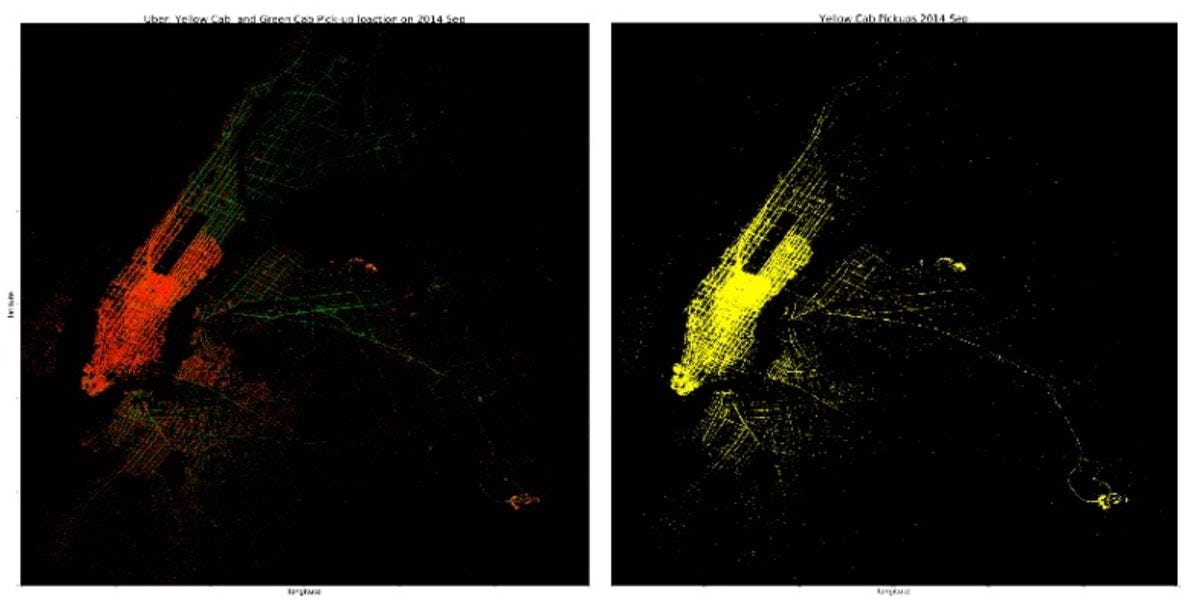Research Highlights
View the Center for Complex Systems & Enterprises' ongoing research projects across domains.
Aerospace & Defense Systems
Project: Tradespace Analysis Tool for Constellations (TAT-C)
Led by: Paul Grogan
Sponsored by: NASA's Earth Science Technology Office
OBJECTIVE:
NASA's Earth Science Technology Office is seeking a software tool that can help scientists and other non-engineers quickly and easily evaluate which constellations can achieve science mission objectives linked to geospatial statistics (i.e., revisiting time to points of interest, data latency, cross-calibration opportunities, and even distribution of observed geophysical phenomena such as rainfall rate, convective intensity, etc.). TAT-C allows users to define new constellations (changing orbit altitude, inclination, geometry, or instrument characteristics) and visualize resulting mission performance metrics. Using TAT-C in an iterative feedback loop allows for relative comparison over a tradespace of different constellations and “interesting” designs can be brought forward to more detailed engineering analysis. We are nearing the conclusion of a major new version of TAT-C that should result in an open source tool.
Artificial Intelligence/Machine Learning
Project: Threat-Based Decision System (TBDS)
Led by: Carlo Lipizzi
Sponsored by: Deputy Assistant Secretary of Defense for Systems Engineering - U.S. Army Combat Capabilities Development Command Armaments Center (CCDCAC)
OBJECTIVE:
Visualizing the Threat-Based Decision System.
TBDS is based on natural language processing and machine learning and has three components:
Risk Decision Support System:
based on the competitive scenario and the "threats" detected from incoming text
Technology Monitoring System:
analyzing streams of domain-specific documents and detecting emerging technologies
Technology Forecasting System:
analyzing streams of domain-specific documents and forecasting coming/probably future technologies
Learn more about this project.
Project: Analyzing and Assessing Contracts for Embedded Risk - Defense Acquisition University (DAU)
Led by: Carlo Lipizzi
Sponsored by: Defense Acquisition University (DAU)
OBJECTIVE:
The system is based on a combination of natural language processing and machine learning and uses a computational representation of contracting officers' knowledge to classify acquisition requests by their most appropriate contract types to minimize the risk related to misclassification.
Learn more about this project.
Healthcare
Project: Humanized AI Systems: Designing User-Centered, Trustworthy AI Systems in Healthcare
Led by: Onur Asan
OBJECTIVE:
This project studies design requirements of user-centered artificial intelligence (AI) systems in healthcare to improve clinician-AI interaction. We specifically explore how trust is formed in this interaction and design requirements to enable optimum trust between users and AI systems to improve the quality of decision-making and related patient safety outcomes in the clinical environment.
Project: The Impact of Technology Use on New Cancer Patient Visits
Led by: Onur Asan
Sponsored by: National Institutes of Health, R15 Mechanism (2020-2022)
OBJECTIVE:
This federally funded project specifically explores how technology use impacts communication, shared decision-making, cognitive workload and trust in oncology visits with newly diagnosed cancer patients. We recruit new cancer patients at Hackensack Meridian Cancer Center.
Transportation & Logistics
Project: Low-Level Automated Light-Duty Vehicle Technologies Provide Opportunities to Reduce Fuel Consumption
Led by: Yeganeh Hayeri
OBJECTIVE:
Gasoline is the main source of energy used for surface transportation in the United States. Reducing fuel consumption in light-duty vehicles can significantly reduce the transportation sector’s impact on the environment. Implementation of emerging automated technologies in vehicles could result in fuel savings. For this project, we examined the effect of automated vehicle systems on fuel consumption using stochastic modeling. Automated vehicle systems examined in this study include warning systems such as blind spot warning, control systems such as lane keeping assistance and information systems such as dynamic route guidance. We have estimated fuel savings associated with reduction of accident and non-accident-related congestion, aerodynamic force reduction, operation load and traffic rebound. Results of this study show that automated technologies could reduce light-duty vehicle fuel consumption in the U.S. from 6% to 23%. This reduction could save $60 to $266 annually for the owners of vehicles equipped with automated technologies. Also, adoption of automated vehicles could benefit all road users (i.e., conventional vehicle drivers) up to $35 per vehicle annually (up to $6.2 billion per year).
Project: Investigating Taxi and Uber Competition in New York City: Multi-Agent Modeling by Reinforcement Learning
Led by: Yeganeh Hayeri
OBJECTIVE:
Figure: Yellow Cab, Green Cab and Uber pickup locations in New York City.
The taxi business has been overly regulated for many decades. Regulations are supposed to ensure safety and fairness within a controlled competitive environment. By influencing both drivers' and riders' choices and behaviors, emerging e-hailing services (e.g., Uber and Lyft) have been reshaping the existing competition in the past few years. This study investigates the existing competition between the mainstream hailing services (i.e., Yellow and Green Cabs) and e-hailing services (i.e., Uber) in New York City. Their competition is investigated in terms of market segmentation, emerging demands and regulations. Data visualization techniques are employed to find existing and new patterns in travel behavior. For this study, we developed a multi-agent model and applied reinforcement learning techniques to imitate drivers' behaviors. The model is verified by the patterns recognized in our data visualization results. The model was then used to evaluate multiple new regulations and competition scenarios.
Results of our study illustrate that e-hailers dominate low-travel-density areas (e.g., residential areas), and that e-hailers quickly identify and respond to change in travel demand. This leads to diminishing market size for hailers. Furthermore, our results confirm the indirect impact of Green Cabs regulations on the existing competition. This investigation, along with our proposed scenarios, can aid policymakers and authorities in designing policies that could effectively address demand while assuring a healthy competition for the hailing and e-haling sectors.
Figure: Yellow Cab, Green Cab and Uber pickup locations in New York City.
